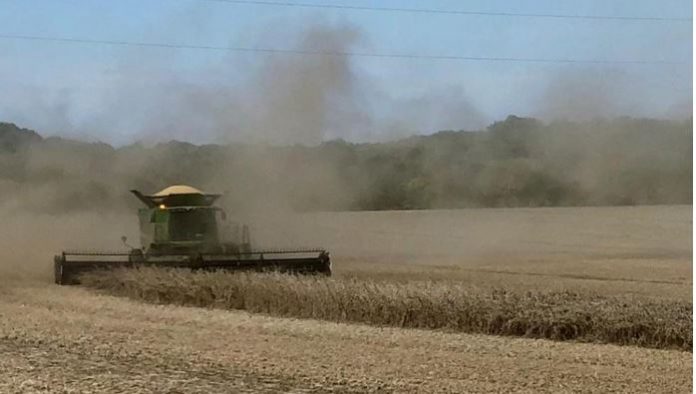
EVANSVILLE, Ind., Dec. 27 (UPI) — China more than doubled its purchases of U.S. soybeans between October and November, making good on the promised “goodwill” purchases during Phase 1 trade negotiations.
China customs data show the country imported more than 2.5 million metric tons of American soybeans in November, up from less than 1.2 million tons in October, said Xiaoping Zhang, the greater China regional director for the U.S. Soybean Export Council.
The purchases came after President Donald Trump announced in October that the two countries were nearing a Phase 1 pact.
That deal was completed Dec. 13, according to an Office of the U.S. Trade Representative announcement. Details of what the pact contains are scant, and it’s unclear when Trump and Chinese President Xi Jinping will sign it.
“They were trying to make goodwill purchases while negotiations were going on between China and the United States,” said Jim Sutter, the U.S. Soybean Export Council’s chief executive officer. “The purchases were all leading up to this Phase 1 agreement.”
The spike in purchases and news of an imminent deal have America’s soy growers feeling optimistic for the first time in many months, Sutter said, though other industry observers warn that the purchases may not be the good omen they seem to be.
China “said it was a goodwill purchase to influence the trade talks,” said Arlan Suderman, the chief commodities economist at INTL FCStone, which provides commodities market analysis. “But it was largely to carry them over until Brazil’s [soybean] crops come available again.”
Since cutting off American soy, China has turned mainly to Brazil to fill the gap. Brazil’s crop is harvested in December and January, which means its supplies still are low, Arland said. But, they are about to be plentiful again.
China “started ratcheting up purchases [of American beans] in mid-October and about the third week of November, they peaked,” Suderman said. “Now, they’ve started working their way back down again. Shipments from the U.S. will probably drop off pretty dramatically over the next five weeks or so.”
That is, unless the Phase 1 deal either lowers soy tariffs or guarantees more purchases, which is something American soybean growers need. The U.S. soybean industry has been devastated by the enduring trade war.
Before it began, China was America’s top soy importer, buying about one-third of all the beans grown in the United States. That stopped suddenly in July 2018, when the Trump administration levied high tariffs on billions of dollars of Chinese goods — and China responded in kind.
By November 2018, China was purchasing almost no American beans, Sutter said.
“It was brutal here,” said Tysen Rosenau, a soybean grower in North Dakota. “Export shipments were canceled. [Grain elevators] stopped taking bids. We couldn’t sell it.”
Recently, there has been more movement, he said.
“We’ve seen some trains loaded, heading west,” Rosenau said. “We just need it to keep going. We need shipments to start flowing again.”





